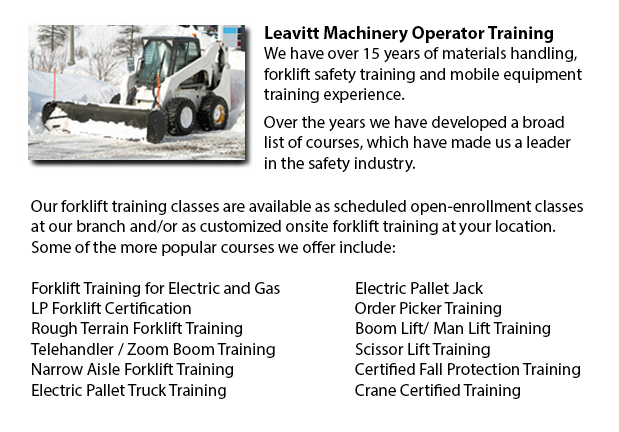
Kelowna Skid Steer Ticket - On a skid-steer loader, the lift arms are alongside the driver with pivot points behind the driver's shoulders. This makes them different than a traditional front loader. Due to the operator's closeness to moving booms, early skid loaders were not as safe as conventional front loaders, specially in the operator's entry and exit. Modern skid-steer loaders today have numerous features to protect the driver including fully-enclosed cabs. Like various front loaders, the skid-steer model can push materials from one site to another, is capable of loading material into a truck or trailer and could carry material in its bucket.
Operation
There are a lot of times where the skid-steer loader could be used in place of a big excavator on the job location for digging holes from within. To begin, the loader digs a ramp to be utilized to excavate the material out of the hole. As the excavation deepens, the equipment reshapes the ramp making it longer and steeper. This is a particularly functional method for digging below a structure where there is not enough overhead clearance for the boom of a big excavator. For example, this is a common scenario when digging a basement beneath an existing structure or home.
There is much flexibility in the accessories which the skid steer loaders are capable of. Like for instance, the traditional bucket of many of these loaders could be replaced with various accessories that are powered by the loader's hydraulic system, including tree spades, sweepers, mowers, snow blades, cement mixers, pallet forks and backhoes. Various other popular specialized attachments and buckets comprise trenchers, angle booms, dumping hoppers, wood chipper machines, grapples, tillers, stump grinders rippers, wheel saws and snow blades.
History
In the year 1957, the very first front-end, 3-wheeled loader was invented in Rothsay, in the state of Minnesota by brothers Cyril and Louis Keller. The brothers invented the loader so as to help a farmer mechanize the process of cleaning turkey manure from his barn. This particular machine was light and compact and included a rear caster wheel that enabled it to turn around and maneuver within its own length, allowing it to execute similar work as a traditional front-end loader.
The Melroe brothers of Melroe Manufacturing Company in Gwinner, N.D. bought in 1958, the rights to the Keller loader. The business then hired the Keller brothers to assist with development of the loader. The M-200 Melroe was actually the result of this partnership. This model was a self-propelled loader which was launched to the market during the year 1958. The M-200 Melroe featured a 12.9 HP engine, a 750 lb lift capacity, two independent front drive wheels and a rear caster wheel. By nineteen sixty, they replaced the caster wheel along with a back axle and launched the very first 4 wheel skid steer loader which was referred to as the M-400.
The M-400 immediately became the Melroe Bobcat. usually the term "Bobcat" is used as a generic term for skid-steer loaders. The M-440 was powered by a 15.5 HP engine and had 1100 lb rated operating capacity. The company continued the skid-steer development into the middle part of the nineteen sixties and launched the M600 loader.
-
Kelowna Forklift Training Program
Kelowna Forklift Training Program - The lift truck is a common powered industrial vehicle which is in wide use these days. They are sometimes called hi los, lift trucks or jitneys. A departments store would use the forklift to unload and load merchan... More -
Kelowna Crane License
Kelowna Crane License - Crane operators ought to be "credentialed", that means they ought to have a crane operator certification or license. Credentialing is considered a mandatory governmental requirement in order to practice as an operator of a cra... More -
Kelowna Boom Lift Safety Training
Kelowna Boom Lift Safey Training - Boom lifts fall under the type of elevated work platform or aerial lifting device. Most usually used in warehousing, construction and industry; the boom lift is so versatile that it could be utilized in almost whate... More -
Kelowna Loader Training
Kelowna Loader Training - Loader Training - Any individual who would like to operate a forklift should take a Loader Training course in order to become a certified forklift truck operator. There are a variety of ways to obtain forklift training. Cour... More -
Kelowna Aerial Lift Safety Training
Kelowna Aerial Lift Safety Training - Each and every year, there are roughly 26 construction deaths attributed to the use of aerial lifts. Most of the craftsmen killed are electrical workers, laborers, painters, ironworkers or carpenters. The majorit... More -
Kelowna Crane Ticket
Kelowna Crane Ticket - Modern cranes can either be simple or complex, based upon the nature of the application they can carry out. For example, mobile cranes are somewhat simple units. A telescopic boom and even a steel truss mounts its movable platf... More -
Kelowna Boom Lift Operator Training
Kelowna Boom Lift Operator Training - The cherry picker work platform is a type of work platform, that will typically have a bucket or platform at the end of a hydraulic lifting system. The machine is likewise referred to as a man lift, boom lift, hy... More -
Kelowna Heavy Equipment Ticket
Kelowna Heavy Equipment Ticket - Depending on the nature of the job at hand, the kind of construction equipment that a heavy equipment operator makes use of differs. Every kind of machine is made to perform particular tasks in the most effective mann... More

Leavitt Operator Training
TOLL FREE: 1-888-254-6157
101-864 McCurdy Place
Kelowna, British Columbia
forkliftcertificationkelowna.com
Email Us
About Us


